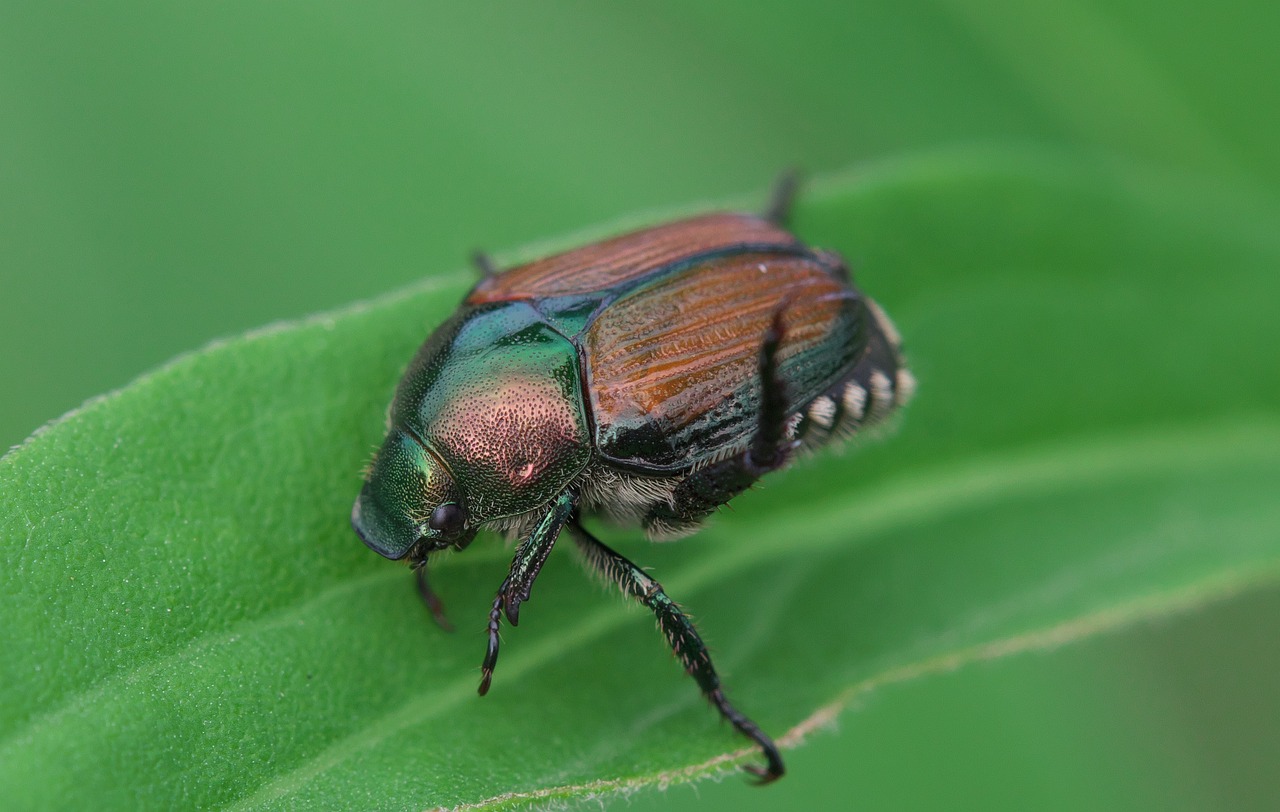Japanese Beetles
 Searcy, Ark. –
Searcy, Ark. –
The adult Japanese beetle (Popillia japonica Newman) is about 3/8-inch long, with
a metallic green body and copper-colored wings. Five small white tufts appear under
the wing covers on each side, with another pair projecting from the abdomen, distinguishing
it from similar beetles.
Feeding Habits of Japanese Beetles
Japanese beetles feed on over 400 plant species, but they prefer around 50, including roses and even poison ivy. Their feeding causes a skeletonized appearance in leaves as they eat between the veins. These beetles are highly mobile, clustering together and damaging broadleaf foliage and ripe fruit, especially in sunny areas.
Life Cycle of Japanese Beetles
Adult Japanese beetles are present for 4-6 weeks after emerging, typically peaking from June to August. After mating, females lay eggs in the soil, which hatch into white grubs. These grubs feed on grass roots for about 10 months before maturing.
Methods of Controlling Japanese Beetles
For minor infestations, beetles can be handpicked in the morning when they are less active. Drop them into soapy water to dispose of them. For larger infestations, baited traps or insecticides may be necessary. However, traps are more effective for large-scale use and can sometimes attract more beetles than they catch in small gardens.
Choosing the Right Insecticide
When using insecticides, it’s important to consider their impact on pollinators. Many insecticides toxic to bees, like those with carbaryl, bifenthrin, beta-cyfluthrin, and permethrin, should not be used on flowering plants. Safer options include pyrethrins, azadirachtin, and acetamiprid, especially if applied when bees are not active.
Pollinator-Safe Alternatives
Chlorantraniliprole (Acelepryn) is an insecticide with minimal toxicity to bees, allowing it to be used on flowering plants without restrictions. However, it is primarily available for commercial or agricultural use and not for homeowners.
By Sherri Sanders
County Extension Agent - Agriculture
The Cooperative Extension Service
U of A System Division of Agriculture
Media Contact: Sherri Sanders
County Extension Agent - Agriculture
U of A Division of Agriculture
Cooperative Extension Service
2400 Old Searcy Landing Road Searcy AR 72143
(501) 268-5394
ssanders@uada.edu
The Arkansas Cooperative Extension Service is an equal opportunity institution. If
you require a reasonable accommodation to participate or need materials in another
format, please contact your County Extension office (or other appropriate office)
as soon as possible. Dial 711 for Arkansas Relay.
Pursuant to 7 CFR § 15.3, the University of Arkansas System Division of Agriculture
offers all its Extension and Research programs and services (including employment)
without regard to race, color, sex, national origin, religion, age, disability, marital
or veteran status, genetic information, sexual preference, pregnancy or any other
legally protected status, and is an equal opportunity institution.